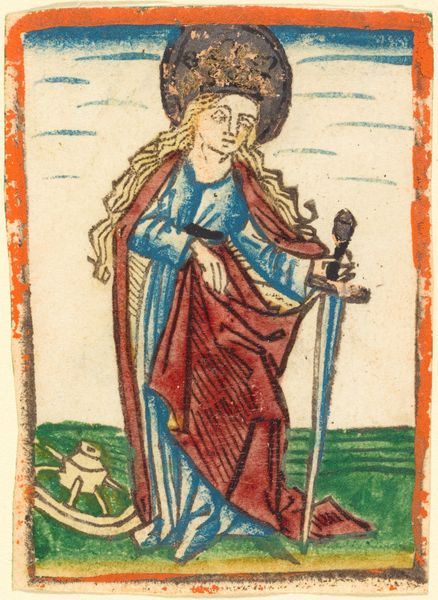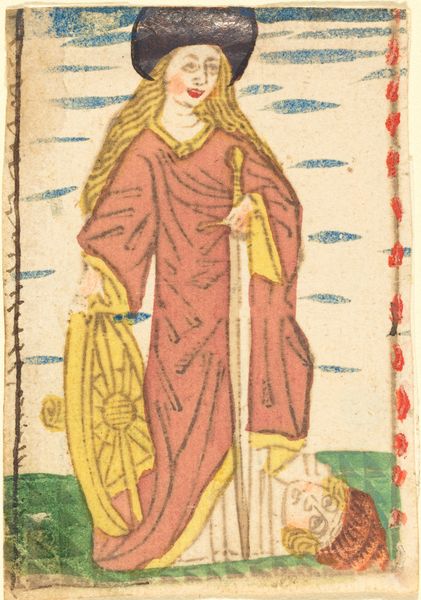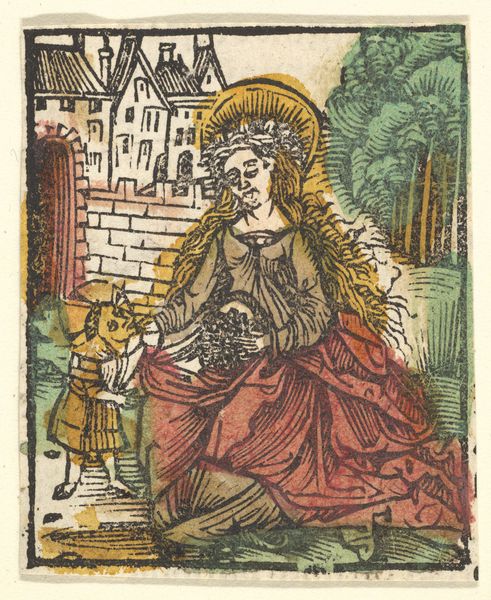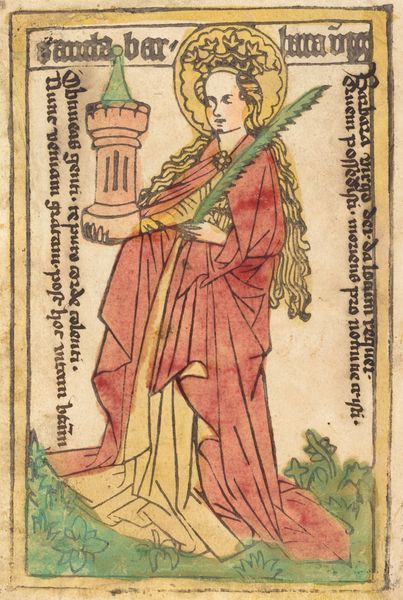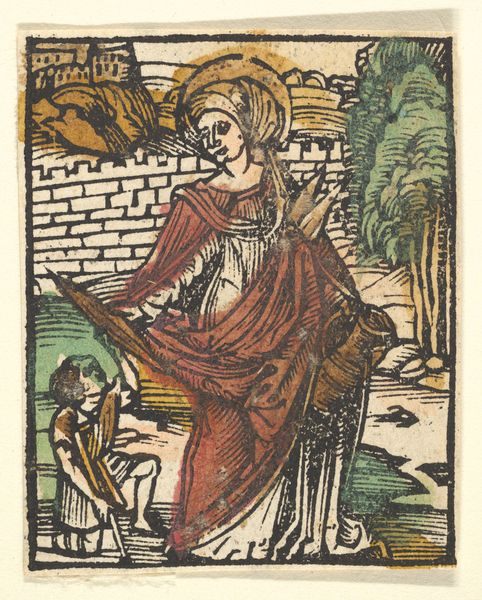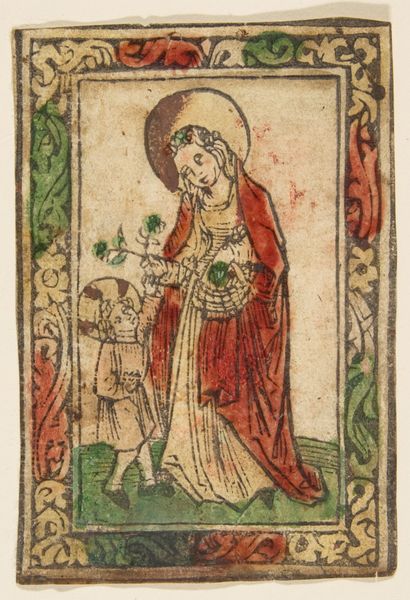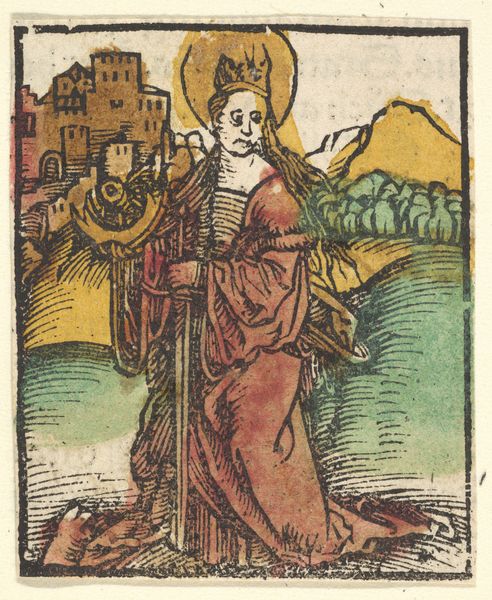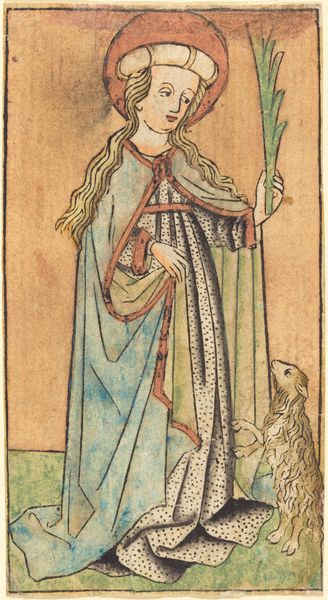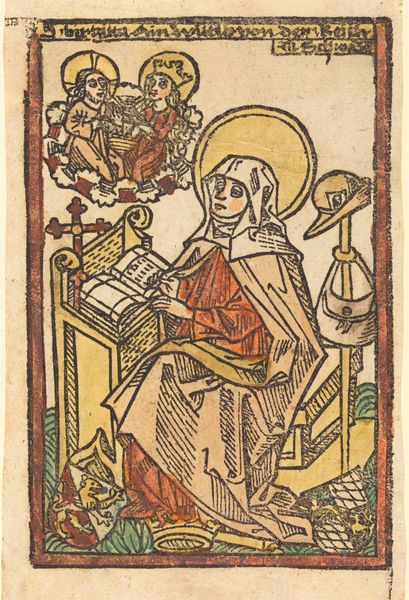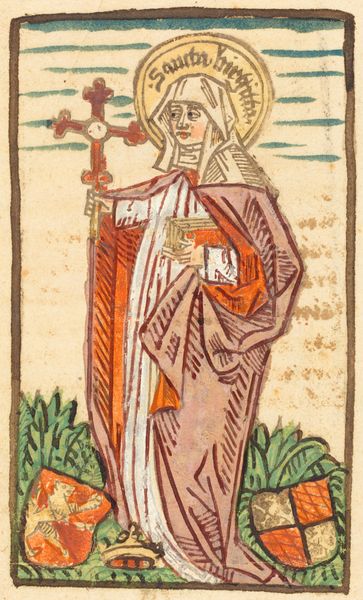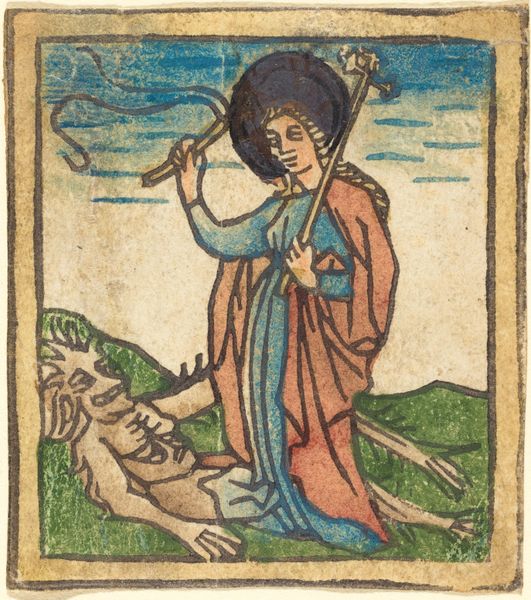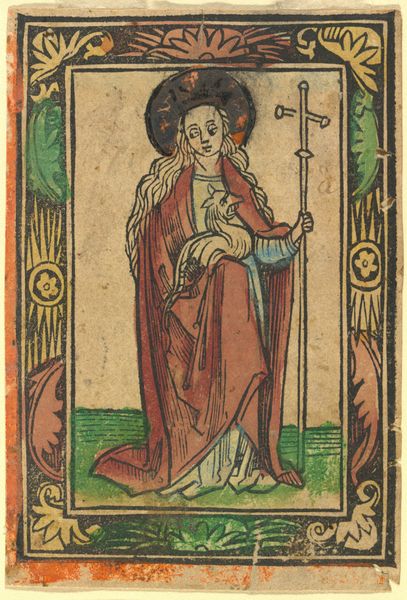
coloured-pencil, print
#
coloured-pencil
# print
#
coloured pencil
#
watercolour illustration
#
history-painting
#
miniature
Copyright: National Gallery of Art: CC0 1.0
Curator: Looking at this miniature print, the colours give it such a tender, gentle air. It's diminutive, yes, but holds so much story within its little frame. Editor: And what a story it is! This is "Saint Margaret," an early print rendered sometime between 1460 and 1470, seemingly by an anonymous artist. The artwork is delicately realized using colored pencils on paper. We should contextualize its place in a period hungry for accessible iconography. Curator: Exactly! Notice her quiet gaze and the softness of her drapery – pink, surprisingly – with a dragon subdued at her feet, or rather, a creature we understand to be a dragon! This image directly contrasts to later more violent or theatrical renderings. It’s more intimate, less concerned with displaying dramatic victory over evil. Editor: It reflects the devotional function of such images. The relatively modest, printed images of saints in this era facilitated private veneration and contemplation among a growing merchant class eager for personalized religious expression, distinct from grand ecclesiastical display. Notice also how Margaret's halo and her cross-staff blend sacred authority with the accessibility of a folk heroine. It presents questions about female authority within this societal framework. Curator: It prompts us to consider the gendered power dynamics prevalent then, where female strength was often depicted through narratives of piety and miraculous interventions, like Saint Margaret defeating a dragon simply by making the sign of the cross after it swallowed her whole, some narratives contend. Here, it looks like a little dog! Editor: These works highlight not only theological dogma but the cultural conditions through which ordinary individuals understood and performed their faith. It’s less a monumental affirmation of papal authority and more a whispered assurance of divine protection against earthly trials and dangers. It is in essence a pocket-sized symbol. Curator: Looking closer, the roughness around the edges emphasizes the hand-crafted nature of early prints, reminding us of its tangible connection to a specific artisan and intended user. I can’t help but wonder about those hands, making prints like these for perhaps someone experiencing their own battles... a source of encouragement, maybe? Editor: I see this miniature less as a triumphant symbol, more as a tool: a quietly revolutionary assertion of personal belief against established hierarchies during a time ripe with political, religious and artistic transformation.
Comments
No comments
Be the first to comment and join the conversation on the ultimate creative platform.
